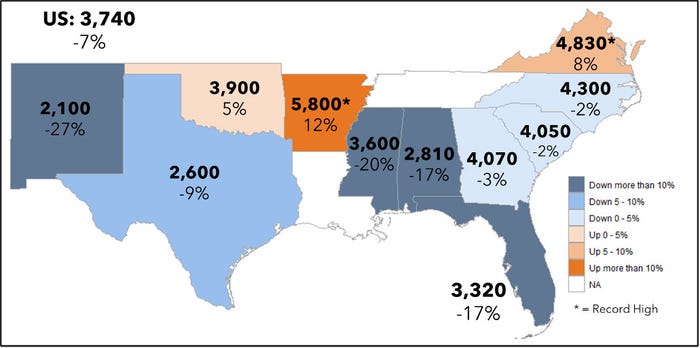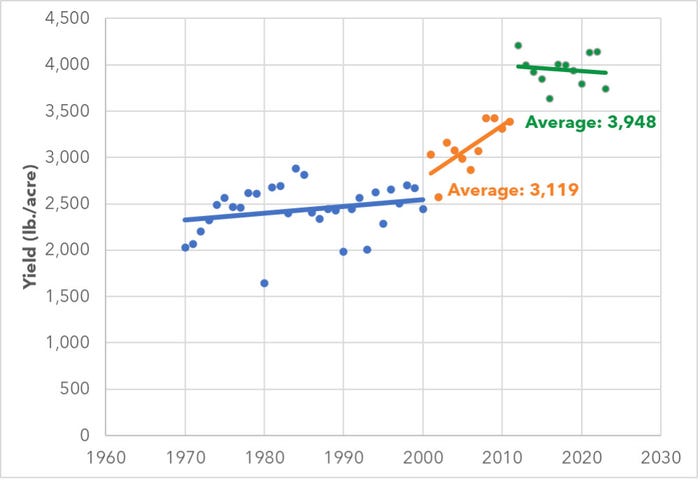March 25, 2024

By Wendiam Sawadgo, Auburn University
The USDA released 2023 production estimates in January showing U.S. peanut yields down 7% from 2022 at 3,740 pounds per acre.
As shown in figure 1, the majority of states’ peanut yields declined in 2023, relative to the previous year. The major peanut producing states of Alabama and Florida both saw 17% decreases in their yields. Georgia, the leading state, had a 3% decline to 4,070 pounds per acre.

Figure 1: 2023 Peanut Yield by State and Percent Change from 2022. Data source: USDA NASS.
Yields were down in 2023 largely due to the drought that persisted in the South throughout the latter part of the peanut growing season. Arkansas led the way with its record-high yield of 5,800 pounds per acre, in part due to most of the state’s peanuts being irrigated.
Putting into context where this year’s yield falls historically, let’s look at peanut yield trends since 1970 in figure 2. The 2023 yield is the lowest since 2016. Over the entire 1970-2023 period, peanut yields increased by 36 pounds per acre annually, on average, but with considerable variation.
From 1970 to 2000, peanut yields increased by an average of 7 pounds per year. Then in 2001, peanut yields reached 3,000 pounds per acre for the first time, and over the subsequent decade, peanut yields would increase by 57 pounds per year on average.

Figure 2: US Peanut Yield Trends. Data source: USDA NASS.
This substantial increase from 2001-2012 is likely driven by the introduction of the Georgia-06G high yielding runner-type peanut cultivar that was released in 2006 and soon gained a significant market share in the southeast. In 2012, peanut yield surpassed 4,000 pounds per acre for the first time. However, over the past 12 years, peanut yields have been flat and averaged 3,948 pounds per acre. In fact, the 2012 mark has yet to be topped.
Peanut yields are an even more critical aspect for profitability due to increased input prices. Production costs are expected to remain elevated in 2024 at $598 per ton, assuming yields equal the five-year average. This means that even with peanut prices expected to reach a decade-high $550/ton, producers would still likely operate at a loss. Strong yields would help lower these breakeven prices, but the recent yield volatility raises concerns that this might not occur.
Source: Southern Ag Today, a collaboration of economists from 13 Southern universities.
Read more about:
YieldsYou May Also Like




